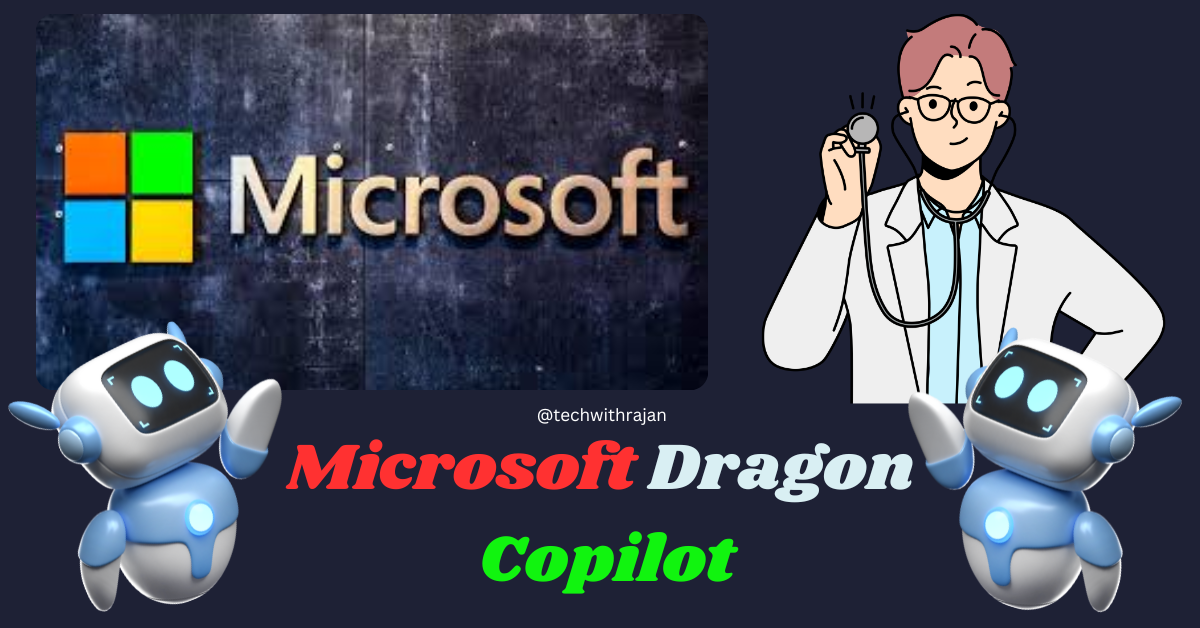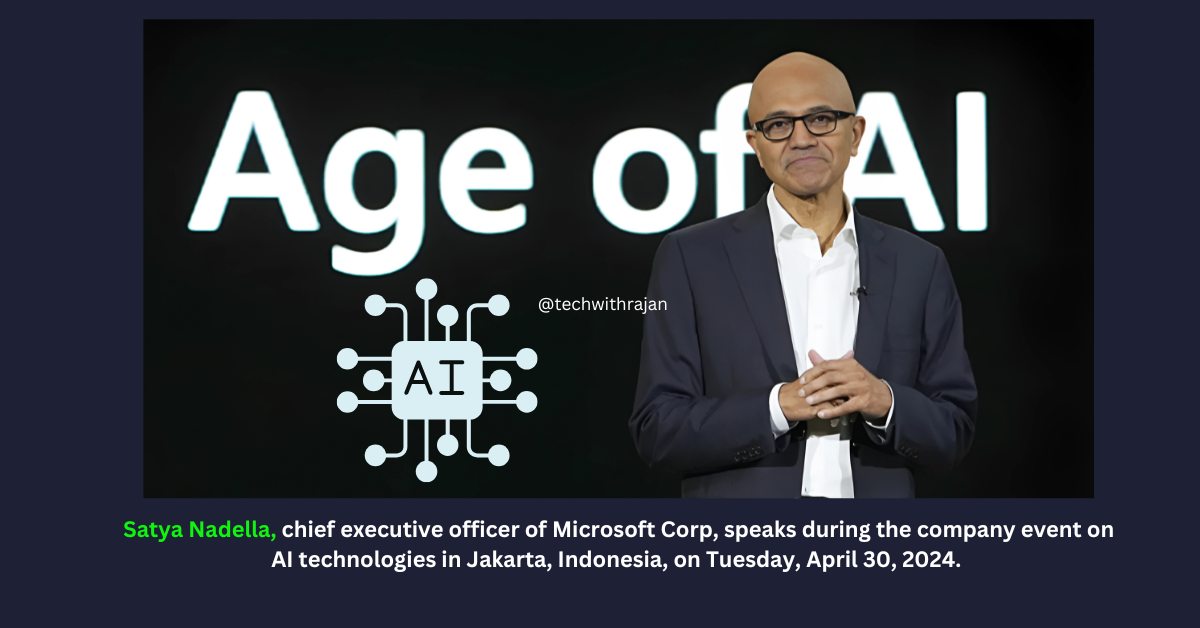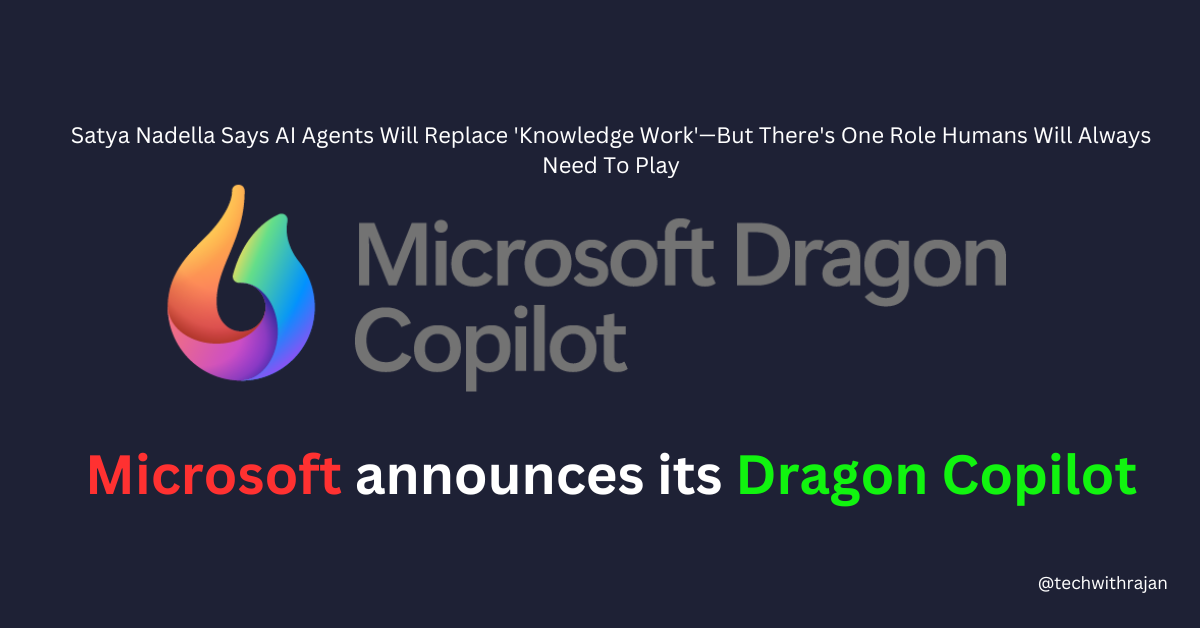
Imagine being a doctor who spends more time connecting with patients than wrestling with paperwork. Sounds like a dream, right? Well, that dream is inching closer to reality, thanks to a groundbreaking innovation from Microsoft.
On March 3, 2025, the tech giant unveiled Dragon Copilot, a voice-activated AI assistant designed to lighten the load for healthcare professionals. This isn’t just another gadget—it’s a lifeline for doctors drowning in administrative tasks, and it’s poised to reshape the way medicine is practiced. Let’s dive into what this means for doctors, patients, and the future of healthcare.
1. A Doctor’s Time Crunch: The Problem Microsoft Is Tackling:
If you’ve ever visited a doctor, you might have noticed them typing away furiously during your appointment. It’s not their fault—modern medicine comes with a mountain of clerical work. Studies show that clinicians spend nearly 28 hours a week on tasks like writing notes, filling out forms, and updating records. That’s more than a full day lost to paperwork instead of patient care! This burden doesn’t just frustrate doctors; it leads to burnout, a growing crisis in healthcare. Microsoft saw this pain point and decided to do something bold about it with Dragon Copilot. Their goal? To bring the focus back to healing.
2. What Is Dragon Copilot, Exactly?
So, what’s this new tool all about? Picture an AI-powered sidekick that listens, writes, and even thinks alongside doctors. Dragon Copilot blends Microsoft’s existing technologies—like Dragon Medical One (a dictation tool) and DAX Copilot (an ambient listening system)—into one seamless assistant. It’s like having a super-smart secretary who never sleeps. Doctors can talk to it naturally, asking it to pull up medical info, draft notes, or even create letters, all while keeping their eyes on the patient instead of a screen. It’s simple, intuitive, and built to save time.
3. How It Works: A Day in the Life with Dragon Copilot:(Imagination)

Let’s paint a picture. Dr. Sarah, a busy family physician, starts her day with a patient complaining of a sore throat. As she chats with the patient, Dragon Copilot quietly listens (with permission, of course) and jots down key details in real time. After the visit, Sarah says, “Hey, Copilot, draft a summary of this visit,” and boom—it’s done. Later, she asks, “Did I mention ear pain earlier?” The AI checks and replies, “No, but I can add it if you’d like.” She can even say, “Add the right medical codes for billing,” and it handles that too. It’s like magic—but it’s really just smart tech at work.
4. Why This Matters for Patients:
You might be wondering, “Okay, but how does this help me as a patient?” Here’s the human touch: when doctors aren’t bogged down by paperwork, they can actually be there for you. They can listen better, ask more questions, and focus on what’s really going on with your health. Less stress for them means better care for you. Plus, faster documentation could mean shorter wait times and fewer delays in getting referrals or test results. It’s a win-win that puts people—not computers—at the heart of healthcare.
5. The Tech Behind the Scenes:

Microsoft didn’t build this from scratch. Back in 2021, they scooped up Nuance Communications, a company already known for its healthcare tech, for a cool $16 billion. That gave them a head start with tools like Dragon Medical One and DAX Copilot, which Dragon Copilot now builds on. The new assistant isn’t just a mashup, though—it’s smarter and sleeker. It uses natural language processing (think ChatGPT vibes) so doctors can talk to it like a colleague. It also ties into electronic health records (EHRs), making it a smooth fit for busy clinics and hospitals.
6. Standing Out in a Crowded Field:
Microsoft isn’t the only player in this game. Companies like Abridge and Suki are also racing to create AI tools that ease doctors’ workloads. Abridge, for example, has raised over $460 million to perfect its scribing tech, while Suki’s grabbed nearly $170 million. So, what makes Dragon Copilot special? For one, it’s got Microsoft’s muscle behind it—think global reach and deep integration with systems doctors already use. Plus, its mobile app, browser access, and desktop options make it super flexible. It’s not just about keeping up; it’s about setting a new standard.
7. Real-World Testing: What Doctors Are Saying:

This isn’t just hype—real doctors are already trying it out. Take WellSpan Health, a network in Pennsylvania and Maryland with 250 locations. They’ve been testing Dragon Copilot with a small group of clinicians, and the feedback is promising. Dr. David Gasperack, a primary care leader there, says it’s a game-changer. “It’s easy to use, and it’s more accurate than what we had before,” he told reporters. He loves how it frees him up to focus on patients instead of forms. It’s still early, but these first impressions hint at big potential.
8. Beyond Notes: A Smarter Assistant:
Here’s where Dragon Copilot gets really cool. It’s not just a note-taker—it’s a thinker. Doctors can ask it big-picture questions like, “Should this patient get a lung cancer screening?” The AI digs into trusted sources (like the CDC) and gives an answer with references. Need a referral letter? Done. Want to tweak a note with specific details? Just say it. This versatility could turn it into a trusted partner, not just a tool, helping doctors make better decisions faster.
9. The Bigger Picture: Fighting Burnout and Restoring Joy:
Burnout isn’t just a buzzword—it’s a crisis. Doctors are leaving the field in droves because the job’s become more about keyboards than stethoscopes. Microsoft’s betting that Dragon Copilot can flip that script. By cutting down on busywork, it aims to “restore the joy of practicing medicine,” as Dr. David Rhew, Microsoft’s global chief medical officer, puts it. Happier doctors stick around longer, and that’s good news for everyone who relies on them.
10. When and Where It’s Coming:
Ready to see this in action? Dragon Copilot hits the U.S. and Canada in May 2025, with the U.K., Netherlands, France, and Germany following later. Microsoft’s keeping the price under wraps for now but promises it’s “competitive.” If you’re a clinic already using their older tools, upgrading should be a breeze. It’s a phased rollout, but the vision is global—better healthcare, one doctor at a time.
11. Challenges Ahead: Privacy and Trust:
No tech is perfect, and Dragon Copilot has hurdles to clear. Privacy is a big one—patients need to trust that their conversations stay secure. Microsoft says it’s all consensual and encrypted, but any slip-up could spark backlash. Accuracy matters too; if the AI mishears or miswrites something critical, it could cause headaches—or worse. Still, with Microsoft’s track record, they’re likely putting serious effort into getting this right.
12. A Personal Take: Why This Feels Exciting:
As someone who’s watched loved ones navigate healthcare, I can’t help but feel hopeful about this. My aunt, a nurse, used to come home exhausted from hours of charting. Tools like Dragon Copilot could’ve given her more energy for her patients—and herself. It’s not just tech; it’s a chance to make medicine more human again. That’s what gets me excited, and I bet plenty of doctors feel the same.
13. The Road Ahead for Healthcare AI:

This is just the beginning. AI in healthcare is exploding, and Dragon Copilot is a sign of what’s possible when big tech meets real-world needs. Down the line, we might see it predicting diagnoses, guiding treatments, or even coaching patients directly. For now, though, it’s about giving doctors breathing room—and that’s a pretty great start.
14. Final Thoughts: A Step Toward Better Care:
Microsoft’s Dragon Copilot isn’t here to replace doctors—it’s here to lift them up. By tackling the grunt work, it’s paving the way for more meaningful patient connections and less stress in the exam room. It’s simple, it’s smart, and it’s a glimpse into a future where technology doesn’t just complicate healthcare—it heals it.
What do you think—could this be the change medicine needs? Comment down below.
How Microsoft’s New Dragon Copilot AI is Changing the Game for Doctors and healthcare Industry